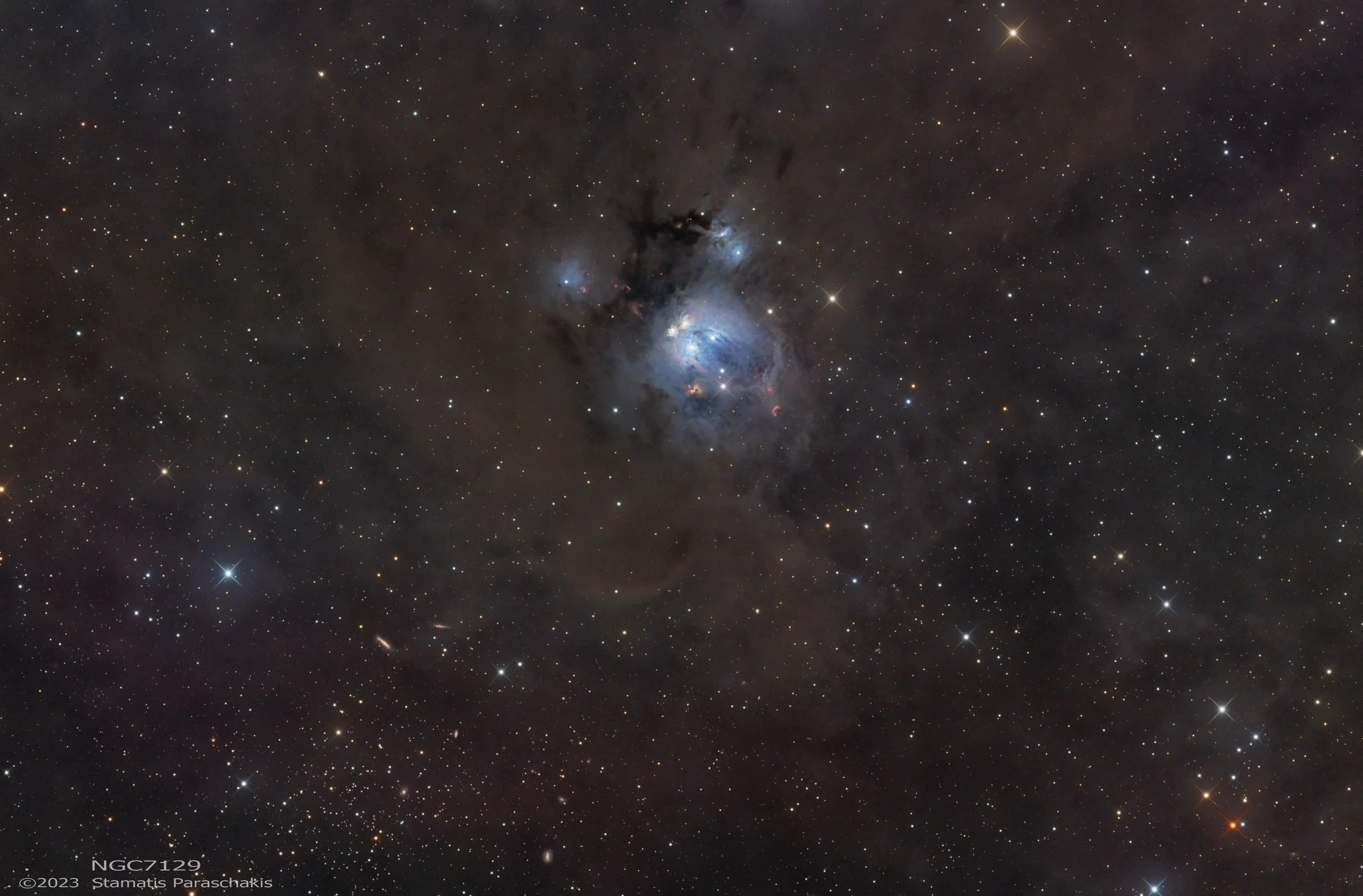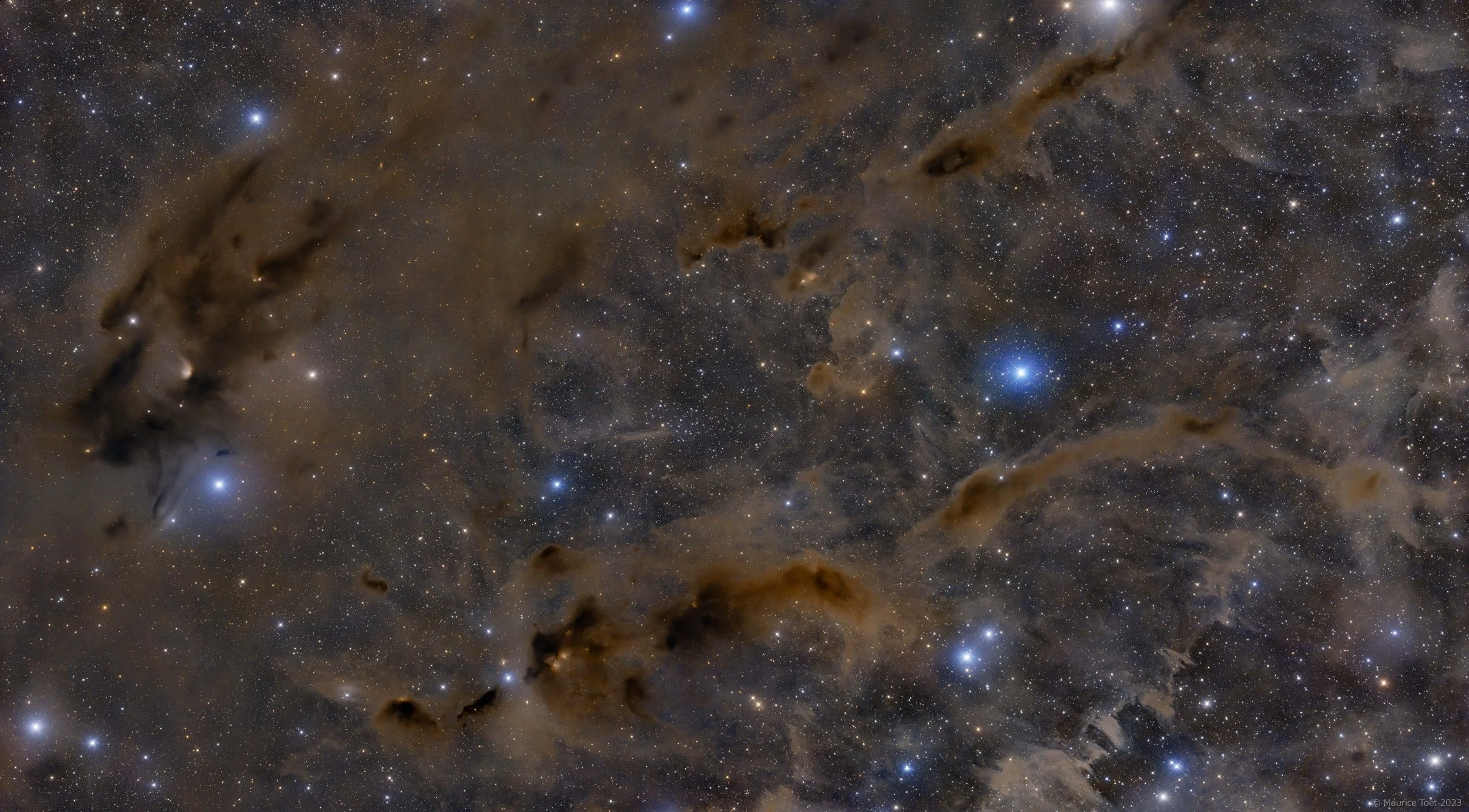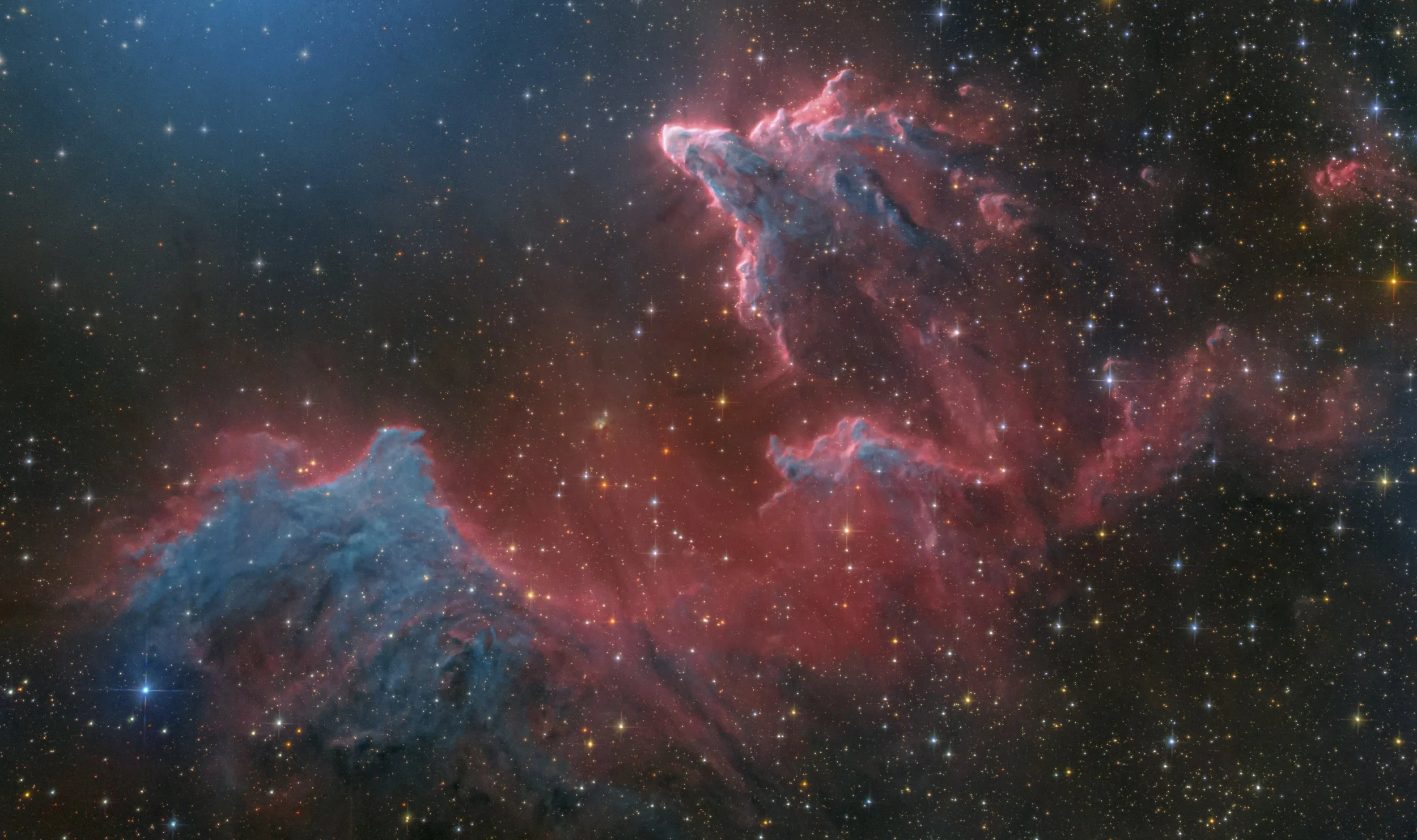
AAPOD2 Image Archives
Hind's Variable Nebula
Image Description and Details: least photographed object.The Hind Nebula(Herbig-Haro object), prototypical example is the variable star T Tauri, visible as the bright orange star near the image center. The orange star centered in this remarkable telescopic sky view is T Tauri, prototype of the class of T Tauri variable stars. Surrounding T Tauri is a dusty yellow cosmic cloud named the Hind's Variable Nebula (NGC 1555/1554).
Total Exposure: 9Hours 45minutes
Equipment Details: Telescope: Planewave CDK24
Camera: QHY 600M Pro
Filters: Astrodon LRGB
Mount: Mathis MI-1000/1250
Copyright: Credit & Copywrite: Harshwardhan Pathak/Telescope live
The Core of the Lagoon Nebula
Image Description and Details: The Lagoon Nebula is a giant interstellar cloud in the constellation Sagittarius. It is classified as an emission nebula and as an HII region.
It was discovered by Giovanni Hodierna before 1654 and is one of only two star-forming nebulae faintly visible to the eye from mid-northern latitudes. Seen with binoculars, it appears as a distinct cloud-like patch with a definite core. Within the nebula is the open cluster NGC 6530.
- Exposure: 6h55m.
- Acquisition: Image data acquired remotely using the Telescope Live CHI-1 telescope.
- Processing: PixInsight & Adobe Photoshop.
Equipment Details: - Optics: Planewave CDK24.
- Camera: QHY600M CMOS.
- Filters: Astrodon SHO.
Copyright: Credit & Copyright: Chris Willocks / Telescope Live.
Name: Christopher Willocks
Pillars of NGC 7822
Image Description and Details: NGC 7822 is a young star forming complex in the constellation of Cepheus. The complex encompasses the emission region designated Sharpless 171, and the young cluster of stars named Berkeley 59. The complex is believed to be some 800–1000 pc distant with the younger components aged no more than a few million years. The complex also includes one of the hottest stars discovered within 1 kpc of the Sun, namely BD+66 1673, which is an eclipsing binary system consisting of an O5V that exhibits a surface temperature of nearly 45,000 K and a luminosity about 100,000 times that of the Sun. The star is one of the primary sources illuminating the nebula and shaping the complex's famed pillars of creation-type formations
NGC 7635
NGC 7635, also known as the Bubble Nebula, is a striking emission nebula located in the constellation Cassiopeia. This cosmic beauty gets its name from the bubble-like structure created by the stellar wind from the massive, young, and luminous star at its center, SAO 20575. The intense radiation and powerful stellar winds from this central star interact with the surrounding interstellar medium, sculpting the nebula's delicate and intricate features.
Small sunspots, large filaments (WL vs Ha)
In this composite view of the Sun, the image on the left, taken using a white light filter, provides a detailed look at the visible surface, or photosphere, revealing granular structures and sunspots that mark regions of complex magnetic activity. Sunspots are cooler areas created by strong magnetic fields inhibiting the transport of heat from the solar interior, appearing as dark blemishes on the solar surface.
On the right, the image captured with a Hydrogen-Alpha (Hα) filter unveils the chromosphere's dynamic features, showcasing solar prominences that tower over the Sun's limb. These prominences, composed of cooler plasma suspended in magnetic loops, offer a captivating glimpse into the intricate magnetic phenomena occurring on the solar surface.
Solar prominences can erupt in dramatic events known as solar flares, releasing intense bursts of energy and charged particles into space. These flares, often accompanied by coronal mass ejections (CMEs), can have significant impacts on our space environment, potentially affecting satellite operations and terrestrial communication systems.
NGC7129
NGC 7129 is a reflection nebula located in the constellation Cepheus. This stellar nursery is known for its intricate and captivating structures, which are illuminated by the light of newly formed stars within its vicinity. The nebula's striking appearance is primarily due to the scattering of starlight by fine dust particles in the interstellar medium.
NGC 7129 offers astronomers a unique opportunity to study the process of star formation and the dynamics of young stellar clusters. By examining the properties of the stars within the nebula and analyzing its molecular composition, researchers can gain insights into the conditions and mechanisms that govern the birth and evolution of stars. The study of NGC 7129 contributes to our broader understanding of the fundamental processes that shape the formation of stars and planetary systems, shedding light on the intricate interplay between radiation, matter, and gravity in the cosmos.
Taurus Molecular Cloud (TMC-1)
TMC-1, or the Taurus Molecular Cloud-1, is a dense interstellar cloud located in the constellation Taurus. This cold and dark molecular cloud is of particular interest to astronomers as it represents an environment where new stars may eventually form. TMC-1 is known for its rich abundance of molecular compounds, including carbon-bearing molecules such as carbon monoxide (CO) and carbon dioxide (CO2), as well as organic molecules like cyanopolyynes.
The study of TMC-1 provides valuable insights into the initial conditions and processes that govern star formation within molecular clouds. By analyzing the chemical composition and physical properties of TMC-1, researchers can better understand the intricate interplay between gravity, magnetic fields, and turbulence, which ultimately lead to the gravitational collapse and birth of new stars. TMC-1 serves as a natural laboratory for studying the early stages of stellar evolution and the complex chemistry that underlies the formation of planetary systems and the building blocks of life in the cosmos.
NGC 2004 et. al. Narrowband
NGC 2004 offers astronomers a unique opportunity to study the formation and evolution of stars in an environment characterized by intense stellar radiation and energetic outflows. By analyzing the properties of the stars within the cluster, researchers can gain insights into the processes of star formation, stellar evolution, and the dynamics of stellar populations in a region of active star formation. The study of NGC 2004 contributes to our broader understanding of the mechanisms governing the birth and development of stars in the diverse and dynamic cosmic landscapes of our universe.
IC 59 and IC 63 - Ghost of Cassiopeia
IC 59 and IC 63, collectively known as the Ghost of Cassiopeia, are a pair of faint reflection nebulae situated in the constellation Cassiopeia. These nebulae are primarily illuminated by the light of Gamma Cassiopeiae, a variable star with a powerful stellar wind. IC 59 and IC 63 owe their ghostly appearance to the scattering of starlight by dust particles in the interstellar medium, giving them a wispy and ethereal aspect.
NGC 7380 - The Wizard Nebula
Image Description and Details: NGC 7380/ SH2 142 - The Wizard Nebula, is an open cluster of stars still embedded in the nebula out of which it formed. The stars are estimated to be about 4 million years old. The cluster is about 8,000 light years away in the constellation Cepheus.











